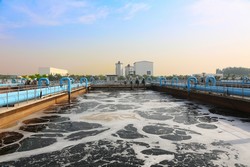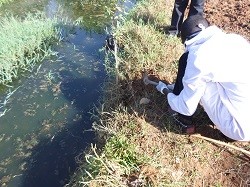Nitrogen removal from wastewater
Removal of nutrients from wastewater is a major EU environmental goal. Current methods release greenhouse gases, although autotrophic nitrogen removal presents an alternative. The EU-funded GREENN2 (Greener biological nitrogen removal: Minimization of N2O emissions and optimization of the integration issues of the nitration / Anammox process for main stream wastewater treatment) project investigated the minimisation of nitrous oxide (N2O) emissions during nitrogen removal. The study also integrated an autotrophic (bacterial) nitrogen removal stage into conventional water treatment. The purpose was to create an environmentally sustainable wastewater treatment process having a low carbon footprint. Research determined that competition between ammonia-oxidising bacteria (AOB) and nitrite-oxidising bacteria (NOB) was essential for NOB repression. The team modelled the operational window for efficient repression. Low-temperature NOB repression can be achieved if ammonium concentrations are above a certain level. Above that level, less oxygen is available for nitrite oxidation, resulting in NOB repression. Below the threshold, anaerobic ammonium oxidation (Anammox (AMX)) activity hampers NOB repression. Across the range of testing, NOB were outcompeted by AOB, and never directly outcompeted by AMX through nitrite unavailability. The team used similar modelling to assess the advantages of using a hybrid system for nitration-AMX. In that case, partial nitration would be carried out in suspension, while AMX would be retained in carriers, as in some technologies. The model showed how the AMX biofilm required a thin layer of AOB that contributes about one third of nitration capacity. Researchers suggested a two-stage process for maintaining efficient NOB repression at low temperatures with granular sludge reactors. The stages involved partial nitration and AMX. The group modelled N2O emissions from biofilm reactors. Findings indicated the importance of an intermediate, hydroxylamine, for diffusing in the biofilm and for enhancing N2O emissions. Testing in a granular sludge reactor supported the theory. The abiotic N2O emissions were important to the treatment of wastewater. The GREENN2 project created a new, low-carbon, wastewater treatment system. The work will have the dual benefit of removing nutrients from wastewater and doing so in a low emissions way.







